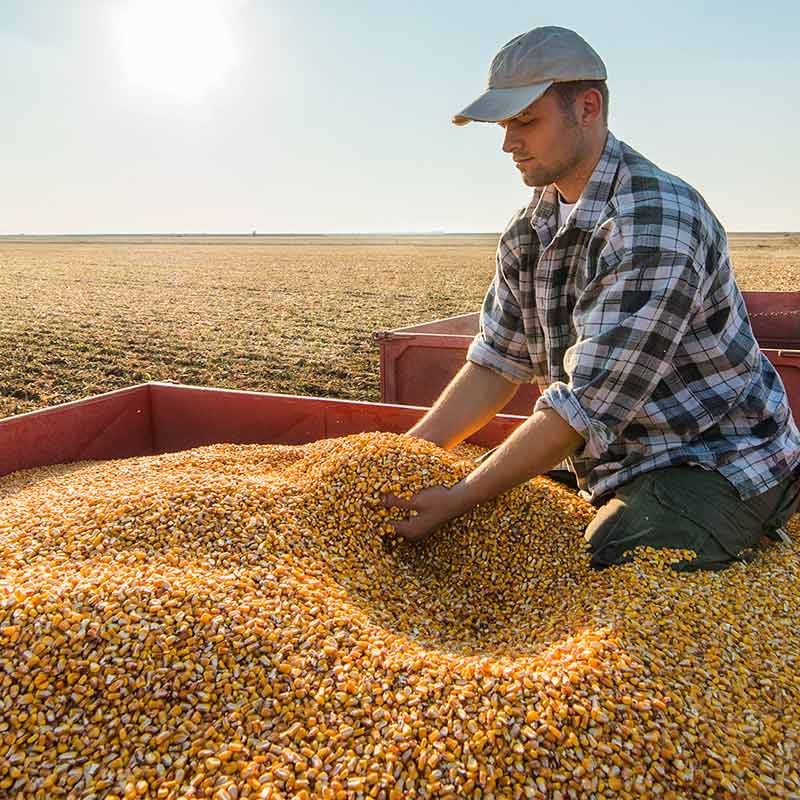Build a sustainability plan 101: identify key stakeholders

Know who you need to succeed
When mapping a sustainability plan, one of the first tasks is to identify who in your company is responsible for relevant activities and operations. Who do you need to educate, get buy-in from, or work with to launch, implement and scale your sustainability plan?
This step is about creating a team with defined roles, and identifying and developing relationships with stakeholders.
While every company is different, gaining buy-in from a senior “champion” and from other colleagues who will be called on to participate (principally or intermittently) along the way can only improve the outcome. With key supporters and the right project team in place, your company will be well positioned to define and communicate clear responsibilities, objectives and timelines for the project.
The goal is to understand your potential problem areas, priority relationships and pathways to success as soon as possible. Essentially, this step will help you determine:
- Who the “deciders” (they can greenlight the project) and the “do-ers” (you’ll need them to accomplish the project) are.
- The motivations of your do-er stakeholders.
- How to activate your do-er stakeholders.

1. Identifying your "Decider" and "Do-er" stakeholders
Filling in this chart will help you determine, at a high level, who your decider and do-er stakeholders are, both inside your organization and in your supply chain. Be sure to think about every stakeholder. For example, if you’re focusing on agriculture, you should consider farmers and veterinarians.
TOOL: High level internal stakeholder chart
Fill in the name, title and contact information for each relevant stakeholder.
| Division | Stakeholder | Stakeholder Plan Gatekeepers (Do-ers) | Business Case Gatekeepers Deciders |
|---|---|---|---|
| Corporate Responsibility Team | Director | Sets the strategy and budget for the team | |
| Managers | |||
| Staff | Responsible for implementing x components of the plan | ||
| Business Team | Merchants | Need to engage with suppliers | |
| Procurement | |||
| Research & Development | Must keep suppliers accountable. Might develop specific strategy for sourcing/procurement | ||
| Accounting | |||
| Finance | |||
| Operations | |||
| Legal | |||
| Compliance | Responsible for confirming fit with legal requirements | ||
| Human Resources | |||
| Communications | Marketing | Need to communicate the plan to external audiences | |
| Consumer insights | |||
| Public relations | |||
| Corporate affairs | |||
| Social media | |||
| C-Suite & Leadership | Board/Owners | Must bless the sustainability team’s course of action as it relates to the company’s overall strategy | |
| Chief Sustainability Officer | |||
| Chief Technology Officer | Approves the budget for the sustainability plan | ||
| Chief Operating Officer | |||
| Chief Marketing Officer | Will need to endorse/approve all messaging | ||
| Chief Compliance Officer |
TOOL: High level supply chain stakeholder chart
Fill in the name, title and contact information for each relevant stakeholder that directly touches your focus area, either upstream or downstream from your company.
| Supply Chain Stakeholder Type | Company | Role and Contact Information | Sustainability Plan Gatekeeprs (Do-ers) | Business Gatekeepers (Deciders) |
|---|---|---|---|---|
| Supplier | Acme: Sells Corn Flakes to Retailers | John Campbell: Finance Director jc@acme.com | Responsible for approving projects | |
| Farmer Group | Firefly Farm Co-op: represents farmer | Jane Smith: Project Manager js@fireflycoop.com | Responsible for implementing project with farmers | |
| Farmer | Midnight Farms | Julia Jones: Corn Farmer jj@midnightfarms.com | Potential champion and spokesperson |

2. Understanding your "do-er" stakeholders
Once you’ve identified your stakeholders at a high level, the next step is to assess your “do-ers” on a more granular level. As with any aspect of business, relationships are everything. Since these are the people that you’ll depend upon daily to help actually implement the plan, honestly assess what your relationship with them, and how it might be improved.
It may be helpful to think about your internal stakeholders within the “AAA” categorization — the Active, Agnostic and Annoyed:
Active stakeholders
Stakeholders who ‘get’ sustainability. They will understand the business imperative for your sustainability plan and can be champions and advocates. They will likely participate in sustainability efforts in a proactive manner.
Agnostic stakeholders
Stakeholders who are indifferent about sustainability within the company or supply chain. They may philosophically agree with sustainability, but they may not see the company’s or their individual role in enacting it. They can be convinced with a good case, and will participate in the plan if there is a directive from their leadership, or there is low risk or opportunity for them professionally.
Annoyed stakeholders
Stakeholders who don’t see sustainability as playing a role within the company. They may or may not agree with the concept of sustainability, and may see any effort towards sustainability as a barrier to the company’s fundamental goals of providing goods and services to customers and optimizing value for shareholders. If they participate in sustainability efforts, it will likely be in a reactive, instead of a proactive manner.
3. TOOL: Activating your “do-er” stakeholders
Utilizing the do-ers in your “High level internal stakeholder chart,” ask yourself the following questions about every key stakeholder. Your goal: really understand what drives them, so they can be an ally for your plan. It’s important to realize that this is based on current assumptions, and this table should be revisited when you have new information.
| Sustainability Plan Do-er Stakeholders | Action(s) Required | Key Relationship Questions |
|---|---|---|
| Stakeholder 1 Name: Richard Davies Title: Chief Procurement Officer Contact info: person@company.com | Needs to be bought-in to engage with suppliers | Describe current relationship with this stakeholder: One of the company’s high-level executives; I see them several times a year at company events |
| Assess how your relationship might be improved: Offer an opportunity to sit down over coffee to discuss the and your sustainability plans | ||
| Assess whether this stakeholder will be open to your sustainability plan or will need convincing. What is their AAA category? “Agnostic.” He will want to be ensured of the feasibility of the collaboration across all external stakeholders, specifically the suppliers involved | ||
| Assess whether internal politics exists: May feel that plans have been made that normally are under their jurisdiction | ||
| Assess how your sustainability plan might align/not align with stakeholders’ values/priorities: CPO’s may prefer working with low-cost suppliers and not care for the social/environmental factors that could alter finances several times a year at company events | ||
| Stakeholder 2 Name: Linda Smith Title: Corporate Responsibility Team Director Contact info: person@company.com | Sets the strategy and budget for the team | Describe current relationship with this stakeholder: She heads my team; she is my first, primary audience. I need to make her look good |
| Assess how your relationship might be improved: Sit down and discuss the similarities between CSR’s environmental goals and business goals to spark collaboration | ||
| Assess whether this stakeholder will be open to your sustainability plan or will need convincing. What is their AAA category? “Active.” She will support sustainability vision but may be dubious of our ability for collaboration among ALL stakeholders | ||
| Assess whether internal politics exists: She will want control over any company sustainability initiative, as those generally fall under their department | ||
| Assess how your sustainability plan might align/not align with stakeholders’ values/priorities: We are aligned, but have different approaches on what needs to happen first. Will need to resolve this |
Want a deeper dive on identifying key stakeholders for your interest area(s)?
Build a Plan
Build a sustainability plan 101: introduction
Guide
Build a sustainability plan 101: assess impact
Guide
Build a sustainability plan 101: ID stakeholders
Guide
Build a sustainability plan 101: set goals
Guide
Build a sustainability plan 101: objectives
Guide
Build a sustainability plan 101: ID pilot projects
Guide
Build a sustainability plan 101: the business case
Guide
Build a sustainability plan 101: pitch & launch
Guide